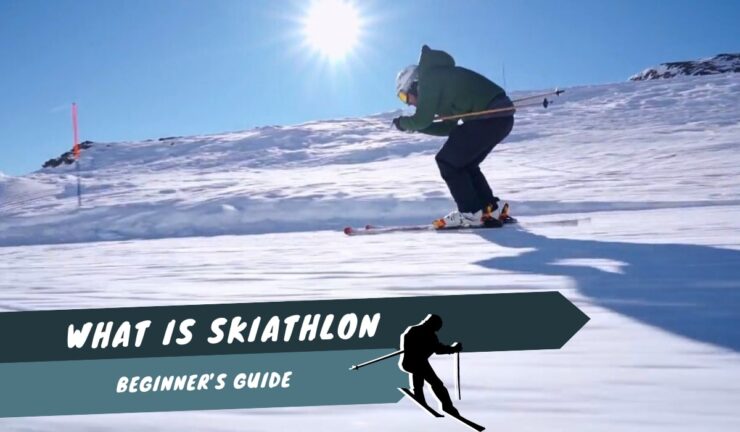Skiathlon, a unique winter sport that combines cross-country skiing and skiing events, is a thrilling challenge for athletes and fitness enthusiasts. If you’re new to skiathlon, it can be daunting to know where to start.
Fortunately, with the right guidance and preparation, anyone can participate in this exciting sport. In this guide for beginners, we will cover the essential information you need to know about skiathlon, including the history and rules of the sport, equipment needed, and tips for success.
Whether you’re a seasoned skier or a complete beginner, this guide will help you unlock the secrets of skiathlon and prepare you for an unforgettable winter sports experience.
Skiathlon: The Basics
Skiathlon is a type of cross-country skiing race that combines both classic and skate skiing techniques. It is comprised of two segments – the classic segment, followed by the skating segment. Skiathlon races typically range from five to fifteen kilometers depending on the level of competition.
This guide will explain the basics of skiathlon, as well as what you need to know to get started.
Definition and Explanation of Skiathlon
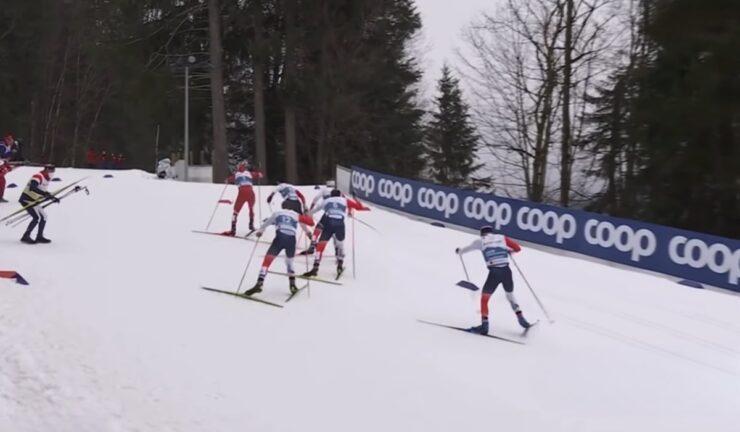
This sport is a type of cross-country skiing race that combines two techniques – classic and freestyle – into one event. The race is divided into two halves, with the first half completed in the classic skiing style, and the second half completed in the skating or freestyle skiing style.
In a Skiathlon race, skiers change their skis at the midway point of the race, usually near the end of the classic portion, to switch from classic to skating style. The race can range from 10km up to 50km or more, with the length varying depending on the level of competition.
Skiathlon is a challenging and physically demanding sport, requiring skiers to have endurance, speed, and agility to succeed. To participate in a skiathlon, you need to have cross-country ski equipment like poles, skis, and boots, a good physical fitness level, and experience in both skiing techniques.
History of skiathlon in competitive skiing
Skiathlon, a popular competitive skiing event, originated in Norway in the 1920s as a way to merge two traditional cross-country skiing techniques – classic and skate skiing – into one race.
Skiers switch between classic and skate techniques throughout the race, making it a physically demanding and technically challenging competition.
Here’s what you need to know about skiathlon as a beginner:
The race involves skiing on a looped course, with one half skied using the classic technique and the other half skied using the skate technique.
Skiers typically change their skis and poles midway through the race to accommodate the switch between techniques.
The skier with the fastest time at the end of the race wins.
Different formats of skiathlon in competitive skiing
There are two formats of skiathlon in competitive skiing: the 15km skiathlon for women and the 30km skiathlon for men.
In the 15km type, the athletes ski a 7.5km distance using the classic technique, which involves skiing with parallel tracks, followed by a switch to the freestyle technique for the remaining 7.5km. In the 30km skiathlon, the athletes ski 15km using the classic technique, followed by a switch to the freestyle technique for the remaining 15km.
The key to success in these races is being able to transition smoothly between the two techniques while conserving energy for the duration of the race. It requires a great deal of physical endurance, balance, and technique to excel in these competitions.
Preparing for a Skiathlon Race
If you are looking to participate in a skiathlon race, it is important to be properly prepared to maximize your performance.
In this section, we will explore the steps you need to take to get ready for your race.
Physical and mental preparation for skiathlon
Physical preparation: Engaging in practices that build endurance like long-distance skiing, interval training, and strength training is crucial. Drinking plenty of fluids before the race to ensure your body is hydrated properly is also essential. Skiing uphill and downhill, stair-climbing, and cycling can improve leg muscles, which will help you ski faster.
Mental preparation: Developing the right mindset is essential for any physical activity, including skiathlon. Setting achievable goals will help you to stay motivated and stay focused on the race. Setting strategies for preventing negative self-talk, being resilient and persistent, and remaining in a positive mindset, also play a significant role in mentally preparing for the skiathlon.
Pro tip: Consistency and discipline in your training routines will enhance your physical and mental readiness for the race. Begin endurance and strength training at least a few months before the race to be better prepared.
Finding the right ski equipment for a skiathlon
Finding the right ski equipment can greatly enhance your skiathlon experience. Start with the following:
Skis: When selecting skis for this racing, it is important to consider variables such as the type of skiing track, terrain, weather conditions, and body weight.
Ski boots: The boots you choose should fit adequately, offer adequate insulation, and be matched to your ski binding.
Ski bindings: Skiathlon skiing requires bindings that can support classic skiing and skate skiing.
Ski poles: The ideal ski pole size is determined by your height; poles are used differently for classic and skate skiing.
Other ski equipment like ski wax, clothing, goggles, and gloves also play significant roles in ensuring a successful skiathlon race. Consulting professional ski equipment vendors or experienced skiathlon racers can help select the best skiing equipment.
Understanding the skiing track and course
If you’re a beginner skier preparing for Skiathlon, it’s important to understand the course and the skiing track. In Skiathlon races, the athletes first ski half the distance in classic cross-country skiing technique and then change skis and skiing technique to skate skiing for the remaining half of the race. The skiing track is usually groomed with parallel grooves for classic skiing and a wide flat surface for skate skiing.
Adequate preparation is necessary to ensure a smooth transition between the two skiing techniques, and training becomes critical to gain the necessary technique and endurance. By understanding the course and skiing track, you can prepare appropriately and build confidence to enable smooth transitions in the competition.
Techniques and Strategies for Skiathlon
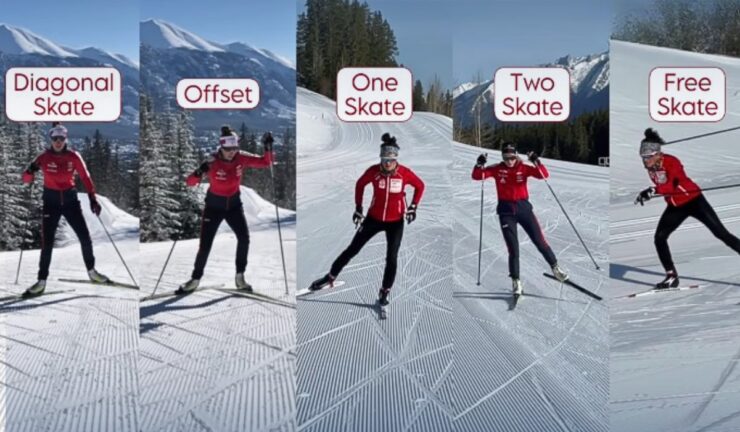
To succeed in a skiathlon, you need to understand the different techniques and strategies you need to employ.
This section will help you learn the basics so you can get out on the slopes and have a great time.
Classic skiing technique in skiathlon
The Classic skiing technique in skiathlon is a popular and effective way to navigate the course for beginners and professionals alike. Here’s how to execute the classic skiing technique:
- Plant your ski poles firmly in the snow, shoulder-width apart.
- Shift your weight onto one ski, then glide forward on that ski, while keeping the other ski parallel to your glide ski.
- Bring the other ski forward and plant the pole again, shifting your weight onto that ski, and continue gliding, switching from one ski to the other.
- Keep your knees bent and your upper body leaning slightly forward for balance.
With practice, you’ll develop the speed and skill needed to excel in skiathlon using classic skiing techniques.
Skate skiing technique in skiathlon
Skate skiing technique is a crucial skill to master for skiathlon, a challenging cross-country skiing event that combines classic and skate skiing techniques.
Here are some tips to help you improve your skate skiing technique:
Body position: Keep your head up, shoulders relaxed, and core engaged. Bend your knees and ankles to maintain a low center of gravity and a stable stance.
Glide and push: Use your poles to propel yourself forward by planting them firmly in the snow and pushing off with a strong arm swing. Keep your weight evenly distributed between your skis and use a smooth gliding motion to maintain momentum.
Balance and control: Maintain a balanced weight distribution and use your core muscles to control your movements and maintain stability on uneven terrain.
Transition: Master the art of switching between classic and skate skiing techniques quickly and smoothly to conserve energy and maintain your pace.
Pro tip: Practice your skate skiing technique on a variety of terrain types, including flat, uphill, and downhill slopes, to improve your balance, control, and agility.
Pacing strategies for skiathlon
Skiathlon is a challenging sport that requires careful planning and pacing strategies to conserve energy and maximize your performance. Here are some techniques and strategies to keep in mind when competing in a race:
Start with a steady pace: Skiathlon begins with classic skiing, which can be physically demanding. However, it’s important to resist the urge to pick up the pace too quickly to avoid burning out early in the race.
Conserve energy during transitions: The transition from classic to freestyle skiing is a critical moment in the race. Try to stay calm and maintain a consistent pace, conserving energy for the final stretch.
The surge towards the finish: As you approach the final stretch of the race, try to pick up the pace and surge towards the finish line. This burst of energy can help you gain an edge over your competitors and secure a strong finish.
By combining these pacing strategies with proper training and technique, you can improve your performance and enjoy a successful skiathlon race.
Nutrition and Hydration for Skiathlon
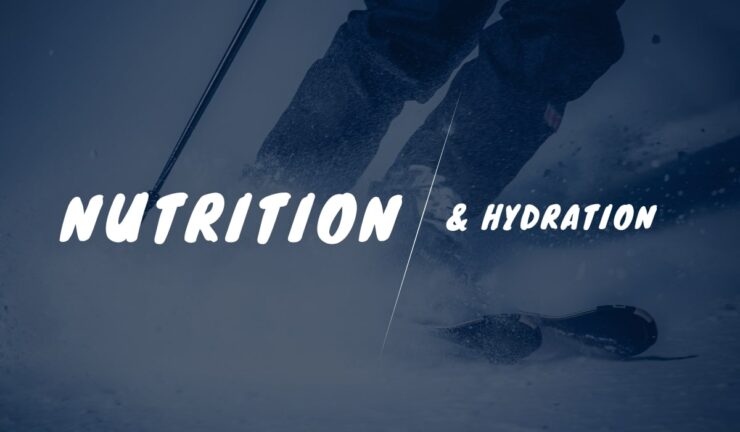
Eating and drinking the right foods and fluids will ensure your body has the energy and support it needs to perform the physical activity you are engaging in.
There are specific strategies you can utilize during the different stages of a skiathlon to ensure your body is properly fueled and hydrated. This guide will guide you through these strategies.
Pre-race nutrition and hydration preparation
Preparing your body with the right nutrition and hydration before a skiathlon race can enhance your performance and help you avoid fatigue and injuries. Here are some pro tips on pre-race nutrition and hydration preparation:
- Hydration: About 2-4 hours before your race, drink 15-20 ounces of water or a sports drink, and continue to sip water every 10-15 minutes until start time.
- Pre-race meal: Eat a light and carbohydrate-rich meal 3-4 hours before the race. For example, a bowl of oatmeal, whole-grain toast with peanut butter, or a fruit smoothie. Avoid heavy or greasy foods, which can cause stomach discomfort.
- Snack: 1 hour before the race, eat a small snack that’s easy to digest, like a banana or an energy bar.
- Caffeine: If you’re used to drinking coffee, have a cup 30 minutes before the race for an energy boost.
Remember, everyone’s body is different, and what works for one person may not work for another. Experiment with different foods, drinks, and timing during training to find what works best for you on race day.
Recovery nutrition and hydration after skiathlon race
After completing a skiathlon race, it is important to focus on recovery nutrition and hydration to help your body repair and refuel. Here are some tips to keep in mind:
Hydration: Replenishing fluids is crucial after a race, and water alone may not be enough. Try drinking an electrolyte drink, coconut water, or any other sports drink to replenish lost nutrients.
Protein: Skiing puts a lot of strain on the muscles which can break down the muscle tissues. Eating protein-rich foods like eggs, chicken, quinoa, and beans can help in muscle recovery.
Carbohydrates: Eating carbohydrates is essential to replace your body’s glycogen stores that were depleted during the race. Good options are whole-grain pasta, brown rice, and sweet potatoes.
Anti-Inflammatory: Consider incorporating foods rich in anti-inflammatory properties like berries, turmeric, ginger, and leafy green vegetables.
Omega-3: Omega-3 fatty acids are excellent for decreasing inflammation and combating muscle soreness. Sources include flaxseeds, chia seeds, and fatty fish like salmon.
Pro Tip: It’s said that chocolate milk or a smoothie is a great post-race recovery drink as it contains protein, carbohydrates, and electrolytes, which help reduce muscle soreness and rebuild the body from the inside out.
Common Injuries and Preventative Measures
Skiathlon is an exciting winter sport, but it can also be dangerous if you don’t take the necessary precautions to protect yourself from potential injuries. Common injuries associated with skiathlon include sprained ankles, pulled muscles, and concussions.
Let’s talk about some preventative measures you can take to avoid these injuries.
Common injuries in skiathlon and how to prevent them
Skiathlon is a thrilling sport, but it also comes with the risk of injuries. Here are some common injuries in it and some tips to prevent them:
Knee injuries: The constant bending and twisting motion of skiing put a lot of stress on the knees, making them prone to injury. Make sure to warm up properly before skiing, use proper form, and invest in good-quality knee pads to protect your knees.
Head injuries: Head injuries are the most severe and potentially life-threatening injuries in skiathlon. To prevent head injuries, always wear a properly-fitted helmet.
Shoulder injuries: Shoulder injuries often occur as a result of a fall onto an outstretched arm. Practice good balance and form to avoid falls, and use protective gear such as shoulder pads to reduce the risk of injury.
Back injuries: Falls and crashes can cause severe back injuries, including strains and sprains. Maintain proper posture and form while skiing, and use back support gear to provide extra protection while skiing.
By taking proper precautions such as warming up, wearing protective gear, and practicing good form and posture, you can prevent many common injuries in skiathlon.
Dealing with altitude sickness and other environmental factors
Altitude sickness and other environmental factors can pose a significant challenge for skiers during a skiathlon race. Here are some tips to reduce the risk of experiencing altitude sickness and other common injuries during a skiathlon race:
Altitude Sickness:
Gradual acclimatization by spending time at higher altitudes before the race can help your body adjust to lower levels of oxygen.
Stay hydrated, avoid caffeine and alcohol, and eat high-carbohydrate foods to maintain energy levels.
Hypothermia:
Dress in layers with a breathable, waterproof outer layer to stay warm and dry.
Don’t overdress or sweat excessively to avoid becoming too cold.
Sunburn:
Wear sunscreen with an SPF of 30 or higher to protect your skin from UV rays.
Wear sunglasses or goggles to protect your eyes from snow blindness.
Wear a hat or helmet to protect your head from the sun and cold.
Finally, always listen to your body and take breaks when you need them to avoid injury and promote overall health and wellness.
What to do when an injury occurs during a skiathlon race
These races can cause several injuries, from minor scrapes to severe fractures. Here’s what you should do if you or someone else gets injured during a race.
Minor Injuries: If you experience minor cuts, scrapes, or bruises during the race, stop skiing immediately and assess the extent of your injury. Clean the wound with soap and water and cover it with a sterile bandage. Monitor the injury and seek medical attention if necessary.
Major Injuries: If you experience a severe injury like a broken bone, stop skiing immediately and seek medical help. Call for ski patrol or an ambulance immediately. Keep the injured area still and do not try to move it.
Preventative Measurements: Take the following steps to prevent injuries while skiing-
- Wear proper protective gear, including a helmet, goggles, and gloves.
- Take frequent breaks and stay adequately hydrated.
- Don’t push yourself beyond your limits and only ski on trails that match your skill level.
- Learn and practice well-taught skiing techniques to prevent injuries.
FAQs
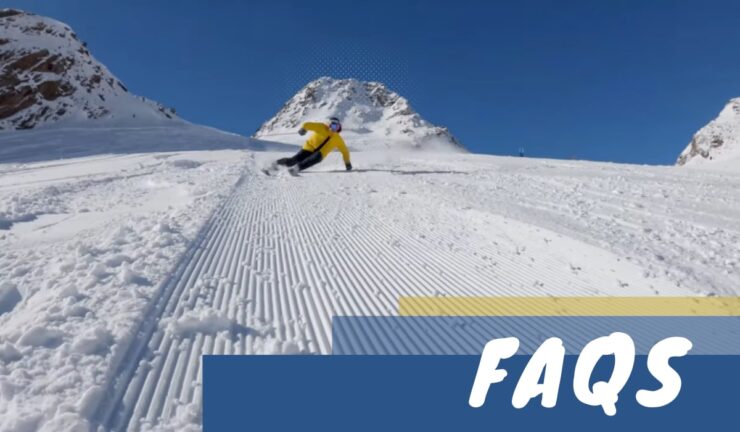
What is the best way to train for Skiathlon?
The best way to train for it is to focus on building endurance and mastering the technical skills required for both cross-country skiing and ski jumping. This can involve a combination of strength training, cardio workouts, and skiing practice.
What is the difference between Skiathlon and Biathlon?
Biathlon is a Nordic skiing event that combines cross-country skiing and rifle shooting, while Skiathlon combines cross-country skiing and ski jumping.
How is Skiathlon scored?
It is scored based on time, with penalties added for any missed ski jumps or gates during the cross-country skiing portion of the event.
What is the history of the Skiathlon?
This sport has been a part of Nordic skiing competitions since the 1920s and was officially added to the Winter Olympics in 2002.
Can Skiathlon be done recreationally?
Yes, it can be done recreationally, and many ski resorts offer courses and equipment rentals for those interested in trying the sport.
Is Skiathlon dangerous?
This can be a dangerous sport if proper safety precautions are not taken. It is important to wear appropriate safety gear and to follow all rules and guidelines provided by event organizers.
Are there any age restrictions for Skiathlon?
It can be enjoyed by individuals of all ages, but certain events or competitions may have age restrictions. It is important to check with event organizers for specific age requirements.
What are the benefits of participating in a Skiathlon?
It is a great way to improve cardiovascular health, build endurance and strength, and develop technical skiing skills. It can also be a fun and challenging way to enjoy the outdoors and participate in a competitive sport.
Conclusion
In conclusion, Skiathlon is an exciting and challenging Nordic event that requires both endurance and technical skills in both cross-country skiing and ski jumping. It is a unique and thrilling event that offers a combination of speed, endurance, and technique.
Whether you are a beginner or an experienced skier, Skiathlon is worth trying. With dedication and practice, anyone can master this amazing sport and experience the thrill of the dual-discipline Nordic event.

